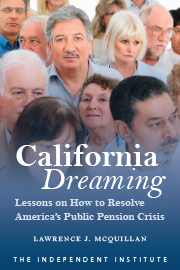Politicians have spent billions on so-called stimulus and bailouts, yet today’s unemployment rate is two times greater than in January 2008. If states are looking for a way to boost employment, a good place to start would be reining in lawsuit abuse—commonly called tort reform.
Consider: In 2009, the 10 states that ranked worst when it comes to lawsuit abuse had an average unemployment rate 33 percent greater than the 10 best tort states. In 2006, job growth was 57 percent greater in the 10 states with the best tort climates than in the 10 worst states. The differences between these groups are striking.
The newly released 2010 U.S. Tort Liability Index ranks all 50 states on the quality of their civil-justice tort climates. The ranking is based on each state’s monetary tort losses, numbers of tort lawsuits and lawyers, number of huge jury awards and presence of plaintiff-friendly “judicial hellholes.” The data were adjusted for the size of each state’s economy and population.
|
||||
To see how this affects a state’s employment picture, take a look at New York.
That state ranks 49th in the index, with the nation’s highest tort litigation risks. It’s waist-deep in lawyers, and New York juries regularly dole out the largest awards. In fact, of the nation’s 101 largest jury awards in 2008, 14 were in New York.
If New York enacted just one tort reform, it would put nearly 87,000 people back to work, according to a new report titled “Empire Disaster.” And if New York’s tort ranking improved 10 places—an optimistic but attainable goal—annual incomes in the state would climb by $17 billion, and annual state tax revenue would jump by more than $1 billion.
This isn’t just a theoretical concept. Texas reformed its medical-liability laws in 2003 to reduce lawsuit abuse against physicians and hospitals. Since then, more than 18,000 additional doctors have applied for licenses to practice medicine in the Lone Star State. Comprehensive medical-liability reforms can reduce a doctor’s annual insurance premium up to 74 percent, according to the study “Tort Law Tally.”
The simple fact is that when deciding where to start a business, expand operations or relocate, entrepreneurs prefer states, and countries, with balanced tort systems that discourage abusive lawsuits. Business leaders are leery of areas with sky-high tort costs and skewed courtrooms, as they should be.
While our lawsuit-happy culture works well for personal-injury lawyers, the rest of us are paying the price.
Total direct tort costs were $255 billion in 2008. According to the report “Jackpot Justice,” lawsuit abuse costs every American a hidden “tort tax” of about $2,000 a year in higher prices and insurance premiums, fewer new products, lower wages and benefits for working people, higher health care costs, and reduced access to care. And the current tort system is very inefficient at its intended purpose—less than 15 cents of every tort-cost dollar goes to compensate plaintiffs.
The threat of lawsuits encourages physicians to practice defensive medicine—ordering unnecessary tests, procedures and referrals to protect themselves against allegations of negligence. This drives up health care costs. According to the Journal of the American Medical Association, 93 percent of doctors admit to practicing defensive medicine. Eliminating this costly threat would save the U.S. health care system $191 billion each year and allow 3.4 million Americans to afford health insurance.
America’s tort system is expensive and inefficient. Some states have responded with lawsuit reforms, but many have not and continue to pay the price. In these states, lawsuit reform should be the core of any realistic plan to create jobs.









